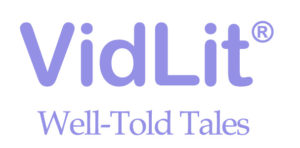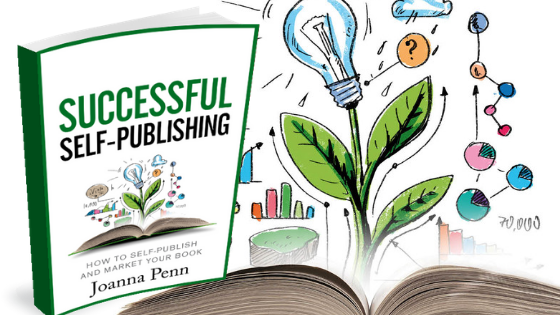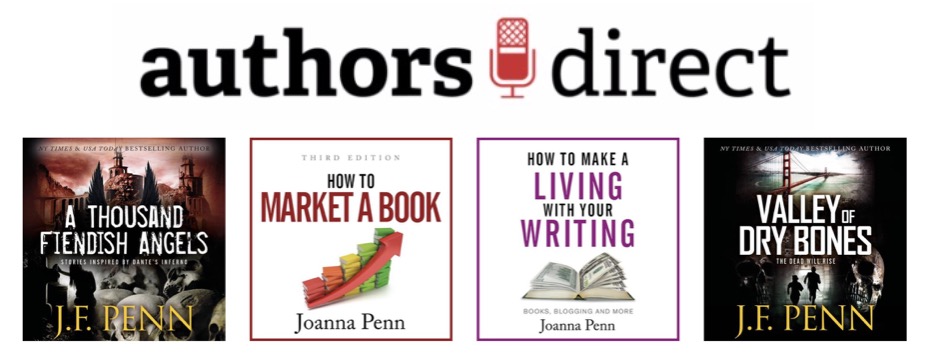Should you publish exclusively on Amazon or should you publish your books wide, making them available on every platform, in every country and every format possible? In today’s episode, I explain your options and my own choices as an independent author.
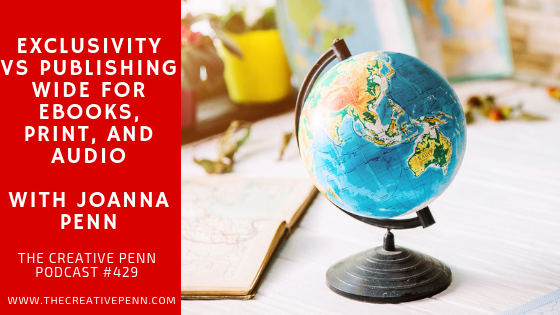 In the introduction, The Amazon Conundrum, Lindsay Buroker’s thoughts on KU; Draft2Digital announce Reading Lists carousel tool; AI and Creativity with Professor Marcus du Sautoy; You Can’t Take My Door [The Next Web]; Google Poem Portraits [Google blog]; AI music and copyright [The Verge]; plus my personal update and how scuba diving has shaped some of my books [Books and Travel podcast]. Plus, join me at The Career Author Summit in Nashville, May 2020.
In the introduction, The Amazon Conundrum, Lindsay Buroker’s thoughts on KU; Draft2Digital announce Reading Lists carousel tool; AI and Creativity with Professor Marcus du Sautoy; You Can’t Take My Door [The Next Web]; Google Poem Portraits [Google blog]; AI music and copyright [The Verge]; plus my personal update and how scuba diving has shaped some of my books [Books and Travel podcast]. Plus, join me at The Career Author Summit in Nashville, May 2020.
 Today’s podcast sponsor is Findaway Voices, which gives you access to the world’s largest network of audiobook sellers and everything you need to create and sell professional audiobooks. Take back your freedom. Choose your price, choose how you sell, choose how you distribute audio. Check it out at FindawayVoices.com.
Today’s podcast sponsor is Findaway Voices, which gives you access to the world’s largest network of audiobook sellers and everything you need to create and sell professional audiobooks. Take back your freedom. Choose your price, choose how you sell, choose how you distribute audio. Check it out at FindawayVoices.com.
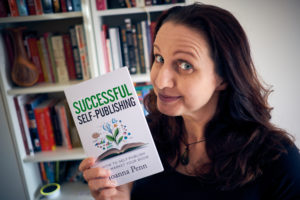 Joanna Penn (yes, me!) is an award-nominated, New York Times and USA Today bestselling author of thrillers under J.F.Penn and also writes non-fiction for authors. She’s also a podcaster and an award-winning creative entrepreneur. Her site, TheCreativePenn.com has been voted in the Top 100 sites for writers by Writer’s Digest.
Joanna Penn (yes, me!) is an award-nominated, New York Times and USA Today bestselling author of thrillers under J.F.Penn and also writes non-fiction for authors. She’s also a podcaster and an award-winning creative entrepreneur. Her site, TheCreativePenn.com has been voted in the Top 100 sites for writers by Writer’s Digest.
You can listen above or on iTunes or your favorite podcast app, read the notes and links below. Here are the highlights and full transcript below.
Show Notes
- What is Amazon ebook exclusivity? KDP Select and Kindle Unlimited
- The benefits and drawbacks of exclusivity on Amazon
- Going wide with print
- Going wide with audio
- Marketing when publishing wide
You can find lots of detail about publishing options here, or in my updated book, Successful Self-Publishing, available as a free ebook on all the usual stores or direct download, as well as print and large print editions.
Any questions or thoughts, please leave a comment on this post, or tweet me @thecreativepenn
Introduction
In the early days of the independent author movement, the most heated online discussions were about when the ‘stigma’ of self-publishing would go away, whether traditional publishing or self-publishing would rule supreme, and when ebook sales would kill off print.
Those discussions have mostly disappeared now and the main split in the author community is about whether to publish exclusively on Amazon or ‘go wide,’ meaning to publish on all platforms in all markets.
I get questions every week on my podcast, email and social media about publishing wide and at London Book Fair a few months back, most of the questions were about this topic. Since there are so many misunderstandings, I’m going to outline the current state of publishing wide and the pros and cons of exclusivity.
Clearly, this is my opinion and I’m biased towards my own experience and global perspective, but I hope that you will find it useful.
Even if you do stick with exclusivity for ebooks, I hope you’ll consider going wide with print and audio in order to expand your reach and diversify your income streams.
What is Amazon ebook exclusivity? KDP Select and Kindle Unlimited
 Amazon is the only platform that has an exclusive ebook program meaning that you cannot publish your book to other sites like Google Play, Kobo, Apple Books, or to library digital eco-systems, or even sell direct from your own site. Readers have to be within the Amazon eco-system to read your book.
Amazon is the only platform that has an exclusive ebook program meaning that you cannot publish your book to other sites like Google Play, Kobo, Apple Books, or to library digital eco-systems, or even sell direct from your own site. Readers have to be within the Amazon eco-system to read your book.
KDP Select is an opt-in program available to authors who publish through the Amazon KDP dashboard as well as some traditionally published authors who negotiate through agents and publishers. There is a check-box per book, and you opt-in for 90 days of exclusivity, which is automatically rolled into the next 90 days unless you specifically opt out.
To be clear, this means you can’t publish the book on any other platform, including your own website, or in any boxsets, during this period. You are licensing exclusive rights to Amazon to publish your ebook within the period you opt-in for.
If you opt in to KDP Select, your books are available in Kindle Unlimited (KU), a subscription program where readers pay a fixed amount per month and can borrow and read unlimited books. It’s described by some as the “Netflix for books” and encourages unlimited reading within the platform, attracting hardcore readers (sometimes called ‘whale readers’) who would usually have to pay a lot more to read that much. Indie authors can only be in KU if they opt in with KDP Select as above, although some exceptions are made for big sellers.
Authors are paid based on Kindle Edition Normalized Page Count (KENPC), basically, pages read, from a pot of money shared between KU authors at the end of each month. This amount changes every month and is determined by Amazon. There are also All-Star bonuses for the top sellers.
You can still set a retail price and sell your book to other Amazon purchasers who are not in KU, but you are not in control of your KENP.
Note: You can still publish on Amazon KDP and not enter KDP Select, as I do.
The benefits of exclusivity
KU is its own ecosystem with a sub-set of voracious readers who only borrow books within the program. At the time of writing, KU is available in US, UK, Italy, Spain, Brazil, France, Mexico, Canada, Germany, India, Australia, and Japan. The program is being rolled out in the biggest book markets globally, so the number of readers is increasing. Of course, your books are available for sale as well, so readers who are not in KU can still buy them on the Amazon platform.
Some genres sell very well in KU and some authors make great incomes by publishing only within KU, but it doesn’t work for every author and every book, even within a popular genre.
Discoverability is easier because anecdotal evidence suggests that the Amazon algorithms favor books in KU and that Amazon ads are more effective for KU page reads.
There are also promotional options every 90 days including five days of free promotion, which can be good for getting reviews, and Kindle Countdown Deals, time-bound promotional discounting for your book.
For some international markets, you can only get 70% royalty if your book is in KU, applicable for Japan, India, Brazil, and Mexico. If you’re not in KU, you can only get 35% in these markets, even though you might get 70% in the other countries. Although these are not significant markets for most indie authors right now, they are a big focus for global growth.
It’s also easier to manage book content and price changes. Timing promotional price changes across stores is one of the big pain points if you publish wide. You can schedule a price change on Kobo and Apple Books, but Nook can take a few days, and Amazon’s speed of change varies between 4-72 hours. Similarly, if you want to change back matter or fix a typo, you have to do it multiple times on multiple stores.
Of course, you can use aggregator services like Draft2Digital, PublishDrive, Streetlib or Smashwords to update once for all platforms, but if you are exclusive to Amazon, you only have to manage one site and one set of changes per book.
If exclusivity sounds great, that’s because it is!
If you only have one book and are just starting out, then it’s definitely worth trying KDP Select at least for the first 90 days. You will have enough on your plate trying to learn lots of new things about publishing and marketing anyway.
Or, if you have several books in unrelated niches, then it’s also potentially worth doing. You may even decide that you want to run your entire author business on Amazon, and that’s certainly your choice to do so.
So why aren’t I in KU?
I’ve been wide since I first self-published in 2008 and both my author names — Joanna Penn for non-fiction and J.F.Penn for fiction — have always been wide.
I briefly tried KDP Select with a new pen-name, Penny Appleton, that I started with my Mum, mainly to see what all the fuss was about, but I pulled those three books out after a short time. Here’s why.
The drawbacks to exclusivity
I was one of the first people in Australia to purchase the Amazon international Kindle when it came out in 2009. [Check out my embarrassing video here!] I’ve been a happy Amazon customer ever since, a voracious reader who has spent many thousands of dollars (and pounds) on the site.

Reading the 1st Kindle in my hammock in Australia, 2009
I’m a Prime member for the free shipping but I am not a KU subscriber. My own Kindle library has 1864 books in it at the time of writing this, all of which I have purchased over the years. I love reading!
As I have mentioned before, authors can be a self-sustaining community because we read far more books than we can ever write. This is why I want everyone in the world to write a book. Imagine the explosion of reading and books sold!
I very happily self-publish and sell my books on Amazon and it makes up a large proportion of my book sales income.
I am not anti-Amazon — but I am anti-exclusivity. I do not check the KU box. Here’s why.
Independence
I’m an independent author by choice. Self-publishing was never the second choice for me. I’m a creative entrepreneur and running my own publishing company makes great business sense. I’m an empowered creative in charge of my own writing career.
The definition of independence includes “free from outside control; not subject to another’s authority; not depending on another for livelihood or subsistence.”
If all you have are ebooks in KU, you are not independent because you are not in control, you are subject to another’s authority, and you depend on Amazon for your livelihood.
Some authors have done very well in KU, and some continue to make fantastic revenue from it. But others have seen their income decimated when the rules around KU page reads or categories changed.
You have no control over how much you’re paid, and Amazon can change the rules at any time. They have done this several times already, and they will continue to do so, because it’s their business and they can do what they like. There’s no warning. It just happens. So there’s a level of anxiety within the KU author community about possible changes and people monitor Facebook groups and forums all the time. There is no peace of mind.
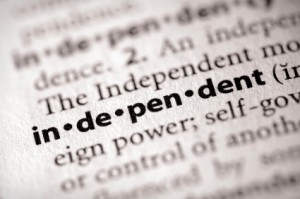 I have a personal example of this loss of control that shapes my own need for independence. In early 2008, I was laid off along with four hundred other people in one day from my corporate IT department in Australia. My one source of income disappeared overnight. Few people saw the Global Financial Crisis coming, and we all had to adapt.
I have a personal example of this loss of control that shapes my own need for independence. In early 2008, I was laid off along with four hundred other people in one day from my corporate IT department in Australia. My one source of income disappeared overnight. Few people saw the Global Financial Crisis coming, and we all had to adapt.
Change is inevitable, so I choose to spread my bets amongst the retailers as well as selling directly from my own site. In an interview with Charlie Rose in 2013, Jeff Bezos said that at some point, Amazon itself would be disrupted. He just hopes it happens after he’s dead! [Publishing Perspectives]
As I write this in April 2019, Amazon has just pulled out of China, closing its marketplace due to competition from Alibaba [CNN] Clearly, it is not a foregone conclusion that Amazon will win the online marketplace war in every market.
I think about the future of publishing a great deal. I’m in my mid-forties, and I’m not just building for the next year, I’m building for the rest of my life and hopefully leaving something for my family when I’m gone. As Amazon continues to rise and rise, we see the push back of many different industries against their domination. There are calls for big tech to be broken up and increased regulation for online retail, so who knows what the next five years will hold? [Medium: Elizabeth Warren article on Here’s how we break up Big Tech].
I’m committed to a future that is not controlled by a single retailer.
I believe that every author’s individual choice plays a part in that future, and together, we can make a difference. That’s why I am part of the Alliance of Independent Authors because we are stronger together.
Of course, most authors have a job or other forms of income, so Amazon is not their only source. I just wanted to explain my own background and decisions as a full-time author-entrepreneur. In my household, this business is our only income, but at this point, The Creative Penn Limited is truly diverse and only around 11% of my total business revenue comes from Amazon.
Missing out on global growth of digital markets
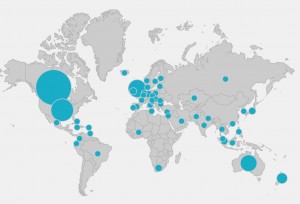
My Kobo Writing Life sales map
I went to school in Malawi, Africa; I’ve worked in the Middle East and all over Europe and lived in Australia and New Zealand as well as traveling around the USA and other places, so I have seen a lot of the world (for which I am truly grateful!).
You can hear about my travels on my other podcast and blog, Books and Travel.
My family is British-Nigerian-Hungarian-Kiwi-Jewish-Canadian-Caribbean, and that’s just amongst my siblings and their kids.
My perspective is always global and yet so much of the independent author movement is US-centric.
Fair enough, it started there, but the world is changing and the adoption of digital technologies and mobile-first economies will change the way the world works by 2025.
Amazon may be the biggest player in the developed digital markets like US, UK, Canada, and Australia, but there are other retail stores and devices that dominate in other countries, plus there are exciting possibilities for where the digital world is heading.
If you stay with Amazon exclusively for e-books you’re missing out on selling your books on other retail stores like Kobo, Apple Books, or on Google Play. The latter is particularly interesting because there are 1 billion Google devices around the world now [CNET] with growth in developing markets that use cheaper Android phones. Many new markets are mobile first.
If you publish wide, your books can be for sale in 190 countries and across apps that you have never even heard of through distributors like Draft2Digital, PublishDrive, Streetlib, and Smashwords. Sure, availability does not guarantee sales, but I’ve now sold ebooks in 86 countries, which would not be possible if I was in KU.
To stay up to date with global publishing news, check out The New Publishing Standard.
Scammers, quality issues and the perception of KU and self-publishing
There are absolutely lots of great authors with fantastic books behaving ethically in KU, but there are also a lot of scammers, as reported by David Gaughran on multiple occasions and in a recent article: Kindle Unlimited: A Cheater Magnet.
Book-stuffing to expand page reads, charts flooded with ghostwritten books, and more recently, the plagiarism of #copypastecris, which Nora Roberts is trying to tackle by suing the author involved. This bad behavior continues to proliferate because the KU model encourages it.
These scandals take us back to the old days of indie when we had to defend the quality of self-published work. Again, there are great books in KU — but there’s also a lot of crap generated by people trying to scam pages read and get All-Star bonuses.
From a reader perspective, KU and the rise of Amazon ads have made it harder and harder to find books I want to read on the store. I’m not the only one finding the categories I love stuffed full of books with no relation to the genre I want to read. I used to browse categories as a reader every week but now I’ve started to find books through physical bookstores again as well as social media and bookseller email lists. I’ve also been browsing on curated stores like Apple Books to find my next read. I can’t be the only one.
Long term thinking
 I understand why so many authors choose to stay exclusive with Amazon. It’s easier to manage, easier to report and for some authors, it’s a lot more profitable. But it’s also short-term thinking, focused on sales today or this month.
I understand why so many authors choose to stay exclusive with Amazon. It’s easier to manage, easier to report and for some authors, it’s a lot more profitable. But it’s also short-term thinking, focused on sales today or this month.
If you only use KU, you’re building a business on a platform that changes the rules regularly, allows scammers to reap rewards, and prevents your books from reaching libraries, readers in other countries who can’t access Amazon, and those who ethically object to Amazon business practices.
Publishing wide is an attitude, not just a technical choice.
It’s deciding that you want your book to be available to every reader in every format. It’s publishing for the long-term, not for daily sales rank.
When you have a long-term business model, every asset you put in the world helps sell the other assets. I’m not so concerned with e-book sales in launch week, I’m concerned with the long-tail income for the rest of my life.
I love creating so that’s how I spend my time. I measure my life by what I create. I focus on creating books, getting them out in every format I can, in every country I can, on every device I can, and then, I know that these sales come, but they take time.
Wide distribution is a long term mindset.
It’s about building an author business for many years to come with a stable base across multiple stores in multiple countries and multiple formats.
It takes time to grow your audience at other stores and having multiple books in a series as well as boxsets can be the best way to gain reader loyalty and sales for the long term.
The more books you have, the more you can play with different options. When you have multiple books, you can adopt multiple strategies. So writing more books in different series for different readers is the ideal situation and then you can have some in Select and some wide. The best of both worlds! Some authors release a whole series in KU and then make it wide all at once along with a boxset edition.
Remember, KDP Select is for ebooks only, so even if you choose to go exclusive with Amazon for your ebook, you can still go ‘wide’ with your print book and audiobook.
This way, you can still reach libraries and bookstores with your words rather than being locked inside the Amazon eco-system. After all, we are independent authors, aren’t we?!
How to go wide with ebooks
If you are in KU currently, the first thing to do is uncheck the auto-enroll button and note the date that your books come out of KU. You can’t publish anywhere else until then.
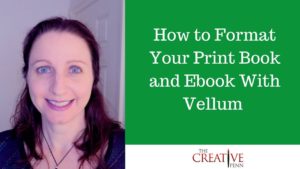 You will need an ePub version of your book to publish on the other stores, whereas Kindle requires a mobi. There are lots of free formatting options now, although I choose to use Vellum because then I can control and test the output. [Here’s my tutorial for Vellum.]
You will need an ePub version of your book to publish on the other stores, whereas Kindle requires a mobi. There are lots of free formatting options now, although I choose to use Vellum because then I can control and test the output. [Here’s my tutorial for Vellum.]
Once you have your files, you can publish wide. There are hundreds of sites that sell ebooks across the world right now and there is no way to individually publish to them all. Plus, you want to spend your time writing, not updating multiple publishing sites.
Luckily for us, there are aggregators who will publish your books to multiple vendors while taking a small percentage of sales in return.
I publish direct to Amazon KDP and Kobo Writing Life because I want to retain control of my pricing and my biggest income sources as well as take advantage of their promotions which are only available for direct publishers.
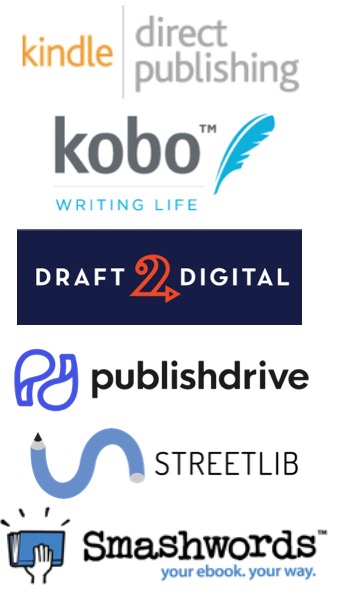 I also use aggregator services: Draft2Digital for Nook and other sites; PublishDrive for Google Play and other European and Chinese sites; and I’m just starting to get my books on StreetLib as well for their focus on Africa, Asia and Latin America. You can also use Smashwords, which has a store where readers can buy direct as well as an aggregator service. I’m now using Payhip to sell direct to readers — see my store here where you can buy my books direct anywhere in the world.
I also use aggregator services: Draft2Digital for Nook and other sites; PublishDrive for Google Play and other European and Chinese sites; and I’m just starting to get my books on StreetLib as well for their focus on Africa, Asia and Latin America. You can also use Smashwords, which has a store where readers can buy direct as well as an aggregator service. I’m now using Payhip to sell direct to readers — see my store here where you can buy my books direct anywhere in the world.
I’ve been independently publishing for over a decade now, so I’ve added new services as they’ve emerged in order to reach more markets.
I am totally committed to wide distribution and having my books available everywhere, but I’ll admit that it takes time to manage updates on all my books on all these different platforms every time I want to make a change.
If you’re just starting out, then you can choose one aggregator to use for all stores, or you can consolidate over time so you have fewer sites to maintain. You have to decide what works best for your book and your own publishing process over time.
It takes time to build an audience if you put your books wide.
You can’t expect to load your books up to a new retailer and expect them to sell straight away. You need time in that market and promotions over time. Moving your books in and out of Select will stop you from building readership on the other platforms. I’ve seen the compound effect of slow growth on my blog, my online platform and my book sales over the years, but you need patience and a long-term plan. More on marketing wide below.
Go wide with print
There is no KU for print, no exclusivity for paperbacks, but if you’re Amazon-only for print, you’re not going to get your book into physical bookstores, you’re not going to get into libraries, you’re not going to get into schools or anywhere else that requires a discount on your print book, or anywhere that has an issue with Amazon — as most physical retail stores do because of the impact Amazon has on their business model.
Think about how a bookstore makes money. They buy books at a discount e.g. half of the list price, then they sell it for a profit. They cannot buy your books on Amazon and they generally don’t want to anyway. They can’t make any money that way. The same applies to libraries and schools, literary festivals and other forms of print retail.
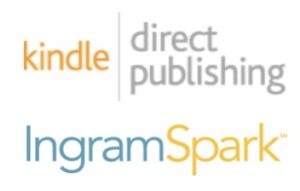 I use KDP Print for books sold on Amazon and I also use IngramSpark for wide-print distribution. They distribute books to 39,000 retailers including bookstores, libraries, schools, and universities. They have a Global Connect program and printers in different global locations as well as ensuring your book is in the catalogs that book buyers order from.
I use KDP Print for books sold on Amazon and I also use IngramSpark for wide-print distribution. They distribute books to 39,000 retailers including bookstores, libraries, schools, and universities. They have a Global Connect program and printers in different global locations as well as ensuring your book is in the catalogs that book buyers order from.
You can do various print formats with IngramSpark including print-on-demand hardbacks, which I love. I’m currently getting my backlist into hardback because some readers love them, they last longer and so may end up in more libraries, secondhand shops and as gifts. Plus, it makes my author brand super professional to have ebook, paperback, hardback, large print, and audiobook editions. Very few traditionally published authors have so many editions of their books and with print-on-demand, it’s not expensive.
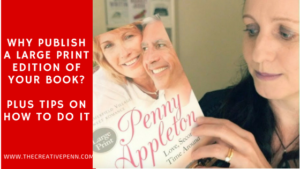 My large print sales are also growing. You can do them on KDP Print as well, but you won’t get sales through libraries which are one of the bigger markets for large print. [Here’s my tutorial on Large Print.]
My large print sales are also growing. You can do them on KDP Print as well, but you won’t get sales through libraries which are one of the bigger markets for large print. [Here’s my tutorial on Large Print.]
Vellum have just released an update for large-print and also mass-market paperback, which is very popular in the U.S.
Since expanding my print distribution with Ingram Spark, my print revenue has doubled from 10% to 21% of my book sales income.
My books have also appeared on physical bookstore shelves as well as next to big-name authors at literary festivals because those retailers can order direct from the catalogs and get a discount.
I’ve also ordered boxes shipped directly to places I’m speaking, and you can get great discounts on bulk printing, even though most of us do print-on-demand as the default option. In episode 377 of the podcast, David Hendrickson explains how he does bulk sales into schools through Ingram Spark.
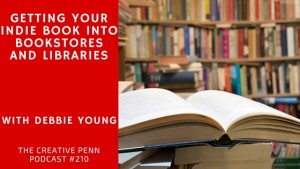 If you want to get your book into bookstores, check out How to Get Your Self-Published Book into Bookstores by the Alliance of Independent Authors. Plus, check out the interview on getting your books into bookstores and libraries with Debbie Young here.
If you want to get your book into bookstores, check out How to Get Your Self-Published Book into Bookstores by the Alliance of Independent Authors. Plus, check out the interview on getting your books into bookstores and libraries with Debbie Young here.
How to go wide with print
You will need your own ISBNs to publish through IngramSpark, so purchase those first. You may decide to use an imprint name as I do with Curl Up Press. This doesn’t have to be a legal company, it can just be a name you want to use, just make sure no one else is using it. ISBNs are free in some countries, like Canada, but you have to purchase them in other countries like US or UK. [More detail on ISBNs here.]
The print-ready files are slightly different between KDP Print and Ingram Spark, so you might consider working with a designer who knows both stores, or you can download templates.
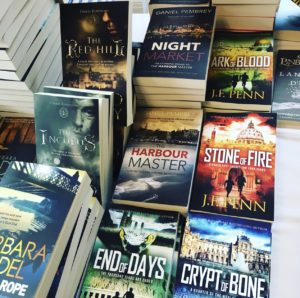
My books for sale at a literary festival
When you publish your paperback through KDP Print, do not select the extended distribution option. If you have already published there, just go in and de-select it later. [More tips on how to publish KDP Print alongside Ingram Spark here.]
Sign up to IngramSpark. There are some setup costs, but you can get discount codes if you’re a member of the Alliance of Independent Authors and they also do promotions around NaNoWriMo and other times.
IngramSpark have lots of help videos and also a podcast, Go Publish Yourself, if you want to learn more about them. The lovely Robin Cutler speaks at a lot of conferences as well and they are always at book fairs and expos, so go along and talk about your situation.
The metadata is similar to KDP Print in that you will need your description and you choose BISAC categories, but you also get to choose Thema codes which are more descriptive. Find the most appropriate for your books.
You will need to choose a discount percentage. Some authors say that you should select the deepest discount possible as that makes it more likely that stores will buy from you. Personally, I choose the lowest discount, usually 35%, which still means they can make money, but so do I. After all, I’m a business too and it’s about the profit, baby! I also select Non-returnable because returns can mean you end up out of pocket.
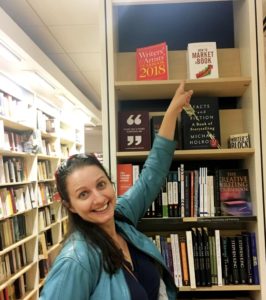
My book in Blackwells Edinburgh!
You can order a proof copy and make any changes and approve for distribution. There are some promotional opportunities on IngramSpark, but I haven’t used them so can’t comment on their effectiveness. There are minor charges for publication and distribution but again, check for discount codes.
Thanks to Alice Rosewell who sent me her thoughts on going wide with print. She notes that you need to set aside some time to get everything ready and you have to remember why you want to do this as there may be some technical frustrations along the way. I second that and it’s true for the indie author life in general, you have to know why you’re doing this as there will always be frustrations.
Go wide with audio
Audiobooks are the fastest growing segment of the publishing market and more opportunities arise every month for authors who want to get their books into audio format. Forbes reported in April 2019 that 50% of Americans have listened to an audiobook – 74% listen while driving and 68% listen at home. 55% of audiobook listeners have also listened to a podcast in the last month. [Forbes]
Streaming audio in smartphone apps means that it’s easier than ever to buy and consume audiobooks and podcasts. Google Auto, Apple Carplay and Amazon Alexa make streaming audio in cars easier than ever, boosting commuter listening. The Amazon Echo, Google Home, and other smart speakers have brought audio into the home and families are listening to more audio to avoid screentime.
Whispersync technology means that you can be reading on your phone or device at breakfast, then get in your car and continue listening where you stopped reading, and when you get home, cook dinner while listening again, all without losing your place. Amazon also bundles audiobooks with ebooks, and if a customer owns an ebook version, the audiobook is cheaper.
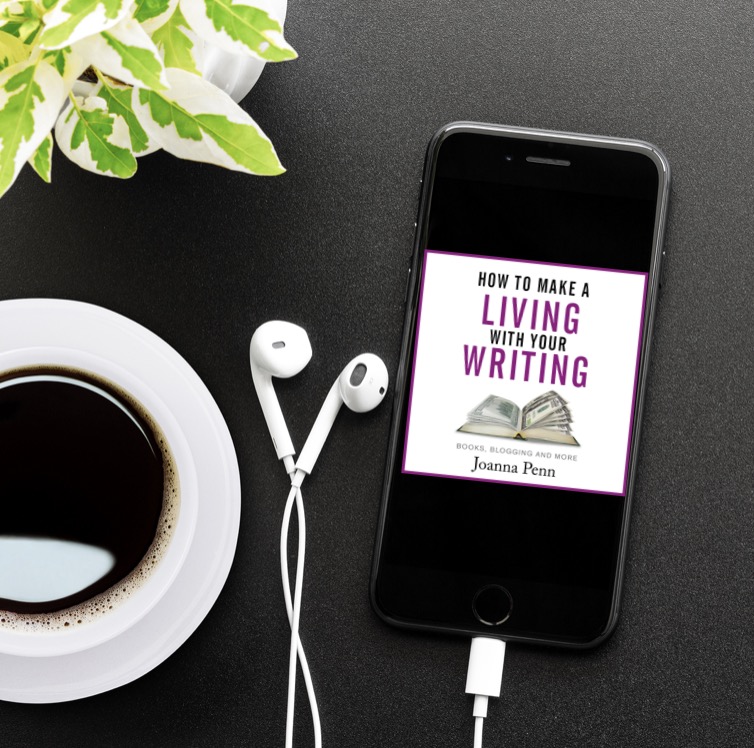 Listeners can get great value audio subscriptions with Audible, Kobo Audio, Scribd, Storytel and other services, plus library users can borrow audiobooks through local providers.
Listeners can get great value audio subscriptions with Audible, Kobo Audio, Scribd, Storytel and other services, plus library users can borrow audiobooks through local providers.
Most traditionally published authors have licensed their audiobook rights and many of those will never be turned into audio, so indies have the advantage of a faster response to this growing market.
The number of audiobooks available right now is considerably smaller than print or ebooks, so you have more of a chance of standing out.
What is exclusivity for audio?
Exclusivity for audio means publishing through ACX and choosing the exclusive contract option, which means your audiobooks will only be available on Amazon, Audible, and iTunes. It’s a 7-year contract and you get 40% royalty, which you can split with a narrator if you do a royalty share deal. If you are non-exclusive on ACX, your royalty rate is 25%.
Royalty share deals are only available on ACX if you go exclusive and you also get the benefit of promotional codes that you can give away, so it’s easier to market your book.
 ACX is only available for authors in US, UK, Canada, and Ireland currently so if you are not in those countries, you will need to use another service.
ACX is only available for authors in US, UK, Canada, and Ireland currently so if you are not in those countries, you will need to use another service.
If you are in those countries, you can still choose the non-exclusive contract if you pay a narrator outright for your audio production, or if you do it privately and then upload later.
Going wide and other options for audio
You can license your audiobook to a professional company e.g. Podium Publishing picked up Andy Weir’s The Martian and won several Audie Awards for it.
You can license your audio rights separately to your other rights, so if you are traditionally published, check whether you still have your audio rights and in which territories as you may be able to get it into other markets yourself.
If you have licensed the rights but the publisher has not produced an audiobook, try to get those rights back.
 If you want to manage audio rights yourself and reach all the various audiobook platforms, then you can use FindawayVoices.com, which is open to authors in all countries. There are other services but I personally use Findaway and they are fantastic for indies. If you already publish through Draft2Digital, you can use their link and get the initial setup fee waived.
If you want to manage audio rights yourself and reach all the various audiobook platforms, then you can use FindawayVoices.com, which is open to authors in all countries. There are other services but I personally use Findaway and they are fantastic for indies. If you already publish through Draft2Digital, you can use their link and get the initial setup fee waived.
In terms of royalties, there are different amounts for different retailers but you can get up to 85% using AuthorsDirect through Findaway, as well as retail sales, and pay per checkout model at libraries which means micro-payments for continual borrowing. I love this model and have already started to see this come in for some of my books. It’s free for the listener through the library eco-system and you keep getting paid over time, so it’s a win-win.
[Listen to my interview with Will Dages from Findaway about all things audio here.]
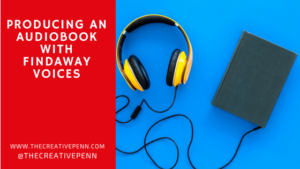 Findaway has a new service, Voices Share, where you can do royalty split deals with narrators. They also have monthly promotions you can submit your books to.
Findaway has a new service, Voices Share, where you can do royalty split deals with narrators. They also have monthly promotions you can submit your books to.
Why go wide with audio
If you’re not wide for audio, you’re missing out on growing global markets and companies which are expanding at an incredible rate. Storytel, Scribd, Kobo Audio and more, with new services emerging all the time. It’s really just getting started. [Publishers Weekly]
Storytel, in particular, are aggressively going after markets where Audible doesn’t yet dominate and it’s looking likely that some markets may have more digital penetration with audio than with ebooks.
You also miss out on library audio distribution if you’re exclusive on ACX, and you can’t sell direct or use a promotional service like Chirp from BookBub, which will be transforming audiobook promotion. It’s only available in the US right now, but again, will hopefully be expanding over time.
Some authors who are exclusive with ebooks are choosing to go wide with audio. One significant example is Michael Anderle, who founded the 20BooksTo50K group and whose ebook model is KU only. In an interview on the Self-Publishing Show, he talked about going wide for audio with Findaway and also mentioned Podium Publishing, “LMBPN [Michael’s publishing company] is going wide on audio. We are not going exclusive. We have found other reasons and justifications for doing it and we are breaking the audible exclusivity.”
If you have signed an exclusive contract with ACX, but you are not doing a royalty split deal, you can move it to a non-exclusive contract after 1 year. I’ve been moving my books out of exclusivity this way when they reach the one year mark. Just email ACX and request it.
Selling audiobooks direct
FindawayVoices has introduced AuthorsDirect, which is an audiobook player app with all the functions of Audible. As of April 2019, it’s only available in US, Canada, and Australia, but hopefully, they will expand that over time.
You can buy some of my audiobooks on AuthorsDirect here for Joanna Penn and here for J.F.Penn. Not all my books are available there as I still have some books in ACX exclusivity.
You can also sell digital MP3 files through sites like PayHip.com but the listener will need to download the files and upload them to their device, which means there is more likely to be technical help needed.
Book marketing when publishing wide
I’m puzzled when authors say they don’t know how to market ‘wide’ books because 99% of book marketing options are ‘wide’ by definition, but only if your books are available everywhere.
 Anything on the internet is (mostly) accessible across the world. This website has traffic from over 200 countries and The Creative Penn Podcast has been downloaded in 215 countries. If anyone in those countries wants to buy one of my books on their favorite platform in their favorite format, they should be able to do it, or they can buy direct from my Payhip store.
Anything on the internet is (mostly) accessible across the world. This website has traffic from over 200 countries and The Creative Penn Podcast has been downloaded in 215 countries. If anyone in those countries wants to buy one of my books on their favorite platform in their favorite format, they should be able to do it, or they can buy direct from my Payhip store.
So blogging, podcasting, guest posting, social media, and any other form of internet marketing can generate ‘wide’ sales.
You can also do book-specific paid ads for ‘wide’ books. I use Amazon Ads for my books on Amazon, because you don’t have to be in KU to use Amazon ads. I use BookBub ads which promote to wide platforms and multiple countries, Facebook ads for different countries and platforms, as well as newsletter services like FreeBooksy and BargainBooksy which promote to wide platforms. BookBub are so keen on wide publishing for audio, they have even introduced Chirp which will have direct audio sales that you can access through Findaway Voices.
It’s easier to look at it another way. The only marketing you can do only if you’re Amazon exclusive is KDP free days and countdown deals for ebooks, and use free giveaway codes on Audible for ACX.
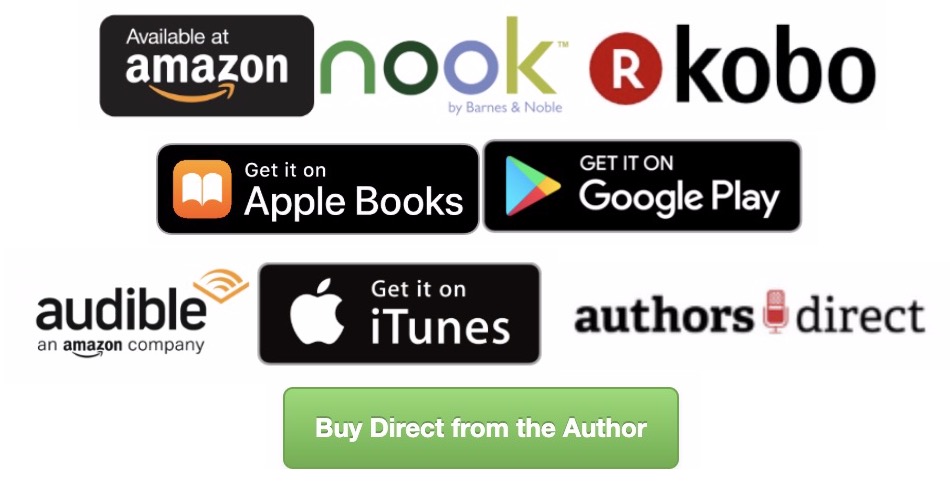 So if you want to go wide, start by adding the other store buttons to your website so people can find your book. You can also use Books2Read.com for ebook links. At some point, I hope Aer.io from IngramSpark will make it easier to sell print-on-demand direct from our websites, as well.
So if you want to go wide, start by adding the other store buttons to your website so people can find your book. You can also use Books2Read.com for ebook links. At some point, I hope Aer.io from IngramSpark will make it easier to sell print-on-demand direct from our websites, as well.
Then promote your books by using the wide links instead of your Amazon specific links. I prefer to use pages on my own website www.TheCreativePenn.com/books because driving traffic to my site also results in email signups and other benefits than just book sales.
There are store-specific promotional opportunities which you can sign up for when you join platforms. Kobo Writing Life has a great promo tab which you can request to join if you publish direct. Also, check out this interview on selling more books on Kobo with Camille Mofidi, and Mark Leslie Lefebvre’s book, Killing it on Kobo, which has more tips.
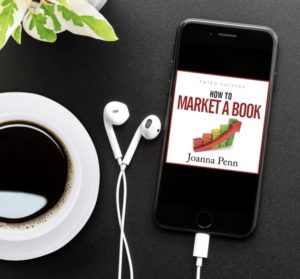 PublishDrive have Amazon advertising options and curate promotions across multiple sites. Findaway Voices also have monthly audiobook promotions you can apply for. Draft2Digital have a great blog with lots of tips on book marketing across the wide platforms.
PublishDrive have Amazon advertising options and curate promotions across multiple sites. Findaway Voices also have monthly audiobook promotions you can apply for. Draft2Digital have a great blog with lots of tips on book marketing across the wide platforms.
The number of ways to market your wide books is pretty much unlimited, but as always, you need to know your target market and where to find them. Once you know that, you can point them towards your wide store links. For more marketing ideas, check out How to Market a Book, available in all the usual formats on all platforms 
OK, I’m done! I hope you found this article a useful round-up of the current state of publishing wide. You get to choose your path through the author journey, so I’d love to know your thoughts. Please leave any questions or your own experience in the comments. Happy publishing!
Podcast: Play in new window | Download
